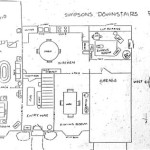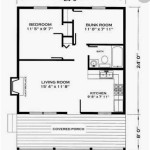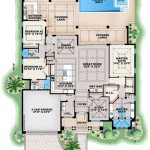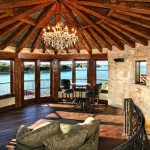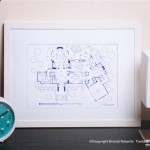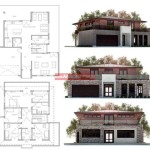Timber Frame Straw Bale House Plans: Sustainable Living Made Easy
In the pursuit of sustainable living, timber frame straw bale house plans have emerged as a captivating and eco-conscious choice for homeowners seeking a harmonious blend of comfort, affordability, and environmental responsibility.
These remarkable structures capitalize on the inherent strength of timber frames, the insulating prowess of straw bales, and the versatility of various finishes. The resulting architectural wonders not only offer a unique aesthetic but also boast exceptional energy efficiency and a reduced carbon footprint.
Understanding Timber Frame Straw Bale Construction:
Timber frame straw bale construction is a method that adeptly integrates the structural prowess of timber frames with the insulating properties of straw bales. Timber frames serve as the skeletal framework, providing rigidity and support to the structure. These frames are meticulously crafted from sustainably sourced timber, ensuring the home's structural integrity while minimizing environmental impact.
Straw bales, the cornerstone of insulation in these houses, are stacked methodically within the framework. Straw's natural thermal resistance effectively traps heat, reducing energy consumption and creating a cozy living environment. Additionally, straw bales contribute to superior soundproofing, ensuring a tranquil haven for occupants.
Benefits of Timber Frame Straw Bale House Plans:
Energy Efficiency: Timber frame straw bale houses excel in energy efficiency, owing to the insulating prowess of straw bales. This inherent insulation minimizes heat transfer, reducing reliance on heating and cooling systems. The result is a significant reduction in energy consumption and associated costs.
Environmental Sustainability: Embracing timber frame straw bale construction is a tangible step towards environmental stewardship. Straw, a byproduct of agriculture, finds new purpose as an insulating material, diverting it from landfills. Timber frames, sourced from sustainably managed forests, promote responsible forestry practices. These homes embody a profound commitment to reducing carbon emissions and fostering a greener future.
Affordability: Compared to conventional construction methods, timber frame straw bale houses can offer cost savings. The readily available and cost-effective nature of straw bales contributes to a more budget-friendly construction process. Additionally, the energy efficiency of these homes can lead to long-term savings on utility bills.
Design Versatility: Timber frame straw bale construction lends itself effortlessly to a plethora of architectural styles. Whether you envision a rustic charm, a contemporary flair, or a blend of both, these homes can be tailored to suit your unique aesthetic preferences. The flexibility of timber frames allows for intricate designs and soaring spaces, while the natural texture of straw bales adds a distinctive charm to the interior.
Fire Resistance: Contrary to common misconceptions, timber frame straw bale houses are inherently fire-resistant. The dense packing of straw bales within the timber frame acts as a natural fire barrier, slowing the spread of flames. Moreover, the application of fire retardant coatings further enhances the structure's fire safety.
Getting Started with Timber Frame Straw Bale House Plans:
Professional Guidance: Embarking on a timber frame straw bale construction project necessitates the expertise of professionals. Architects, engineers, and builders experienced in this specific construction method can provide invaluable guidance, ensuring adherence to building codes and optimal performance.
Local Regulations: Before embarking on your building endeavor, it's essential to familiarize yourself with local building codes and regulations. Some jurisdictions may have specific requirements or restrictions related to alternative construction methods like timber frame straw bale.
Material Selection: Choosing high-quality materials is paramount. Opt for sustainably sourced timber and ensure the straw bales meet industry standards for density and moisture content. Proper material selection lays the foundation for a durable and energy-efficient home.
Construction Process: The construction process of a timber frame straw bale house typically follows a well-defined sequence. It commences with the assembly of the timber frame, followed by the careful stacking of straw bales within the framework. Once the structure is complete, it's rendered with a protective coating, such as stucco or plaster, to enhance durability and weather resistance.
Conclusion:
Timber frame straw bale house plans present a compelling opportunity for individuals seeking a sustainable, energy-efficient, and aesthetically pleasing living space. These remarkable structures embody a harmonious fusion of eco-consciousness and affordability. With careful planning, professional guidance, and meticulous construction, timber frame straw bale houses can provide a comfortable and environmentally responsible home for generations to come.

Timber Frame Straw Bale House Design The Year Of Mud

Designing And Self Building An Affordable Straw Bale House Planning Help

A Low Impact Woodland Home

Designing And Self Building An Affordable Straw Bale House Planning Help

Exposed Interior Timber Frame In Straw Bale Houses

Timber Frame Straw Bale House Design The Year Of Mud

Straw Bale Timber Frame Vermont Natural Homes

Straw Bale Timber Frame Vermont Natural Homes

67k Straw Bale Self Build Homebuilding

Pros And Cons Of Straw Bale Construction The Family Handyman


